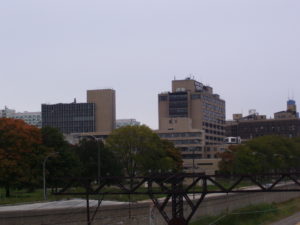As a global city, Chicago is known worldwide for its architecture, cultural attractions and its sustainability-oriented initiatives. Tourists, professionals and students alike visit this city by the thousands each year, drawn to the music, food and other various aspects of this wonderful city.
The downtown area of Chicago, with its fabulous shopping and spectacular skyline is especially (and rightly!) recognized. This blog will feature many of Chicago’s downtown area attractions and icons in the weeks to come. However, Chicago extends far beyond the Loop. Many of its not-to-be missed gems are located in areas of the city many visitors (or even locals) rarely visit.
As an attempt to address this unfortunate circumstance, the introductory post for this blog will be the first in a series of four entries focusing on Chicago’s architecture, culture, nature and sustainability in locations south and west of Chicago’s Loop. The locations included here are not meant to be exhaustive or even representative of Chicago’s South and West Sides. Instead, the intent is to inspire curiosity about what else may be out there waiting to be discovered. HINT: there’s a whole lot.

The Lost — and the Saved
As renowned as Chicago is for its architecture, there have been several significant (and painful) losses during its history. The Home Insurance Building, designed by William LeBaron Jenney and arguably the first true skyscraper (or at least one of the first true skyscrapers, depending on whom you ask) was razed in 1932 to make room for the 140 S. LaSalle building, admittedly another architectural icon. Photographer Richard Nickel lost his life attempting to chronicle the demolition of Louis Sullivan’s Stock Exchange Building. More recently, the demolition of the Bertrand Goldberg-designed Prentice Hospital sparked fierce controversy.

Losses have occurred outside the Loop as well. One of the most controversial instances was the demolition of nearly the entire Michael Reese Hospital campus in Bronzeville on Chicago’s near South Side as part of Chicago’s ill-fated bid for the 2016 Summer Olympic Games.
The campus was included on Preservation Chicago’s 7 Most Endangered List of 2009, as well as on Landmark Illinois’ 2009 Most Endangered Buildings list. Eight mid-century Modernist buildings located on the site were designed with the influence of Walter Gropius, former director of the Bauhaus and planning consultant for the hospital campus development during the period after World War II. Ultimately only the Gropius-influenced Singer Pavilion (completed in 1948) remained standing on the immense 48-acre parcel.
Continue reading “Chicago Beyond the Loop: Part 1 of 4 — Architecture”
